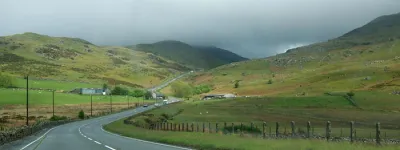Two years were considered adequate for the construction period, this being the length of time it usually takes to build a new road even today. Unfortunately the whole period was one of the wettest in living memory, and just a few months in to the project, the earthworks were abandoned for the winter of 1956-7 because the torrential rain made the ground unworkable. The rains continued through the summer of 1957 and into 1958, by which point the contractor, Tarmac, had given up trying to re-use excavated material for embankments and was instead sending it to tip and importing dry earth from elsewhere.
Those working on the scheme had plenty to scratch their heads about even when it was dry enough to work. The new motorway was designed to incorporate all manner of trials in new surfacing techniques, bridge designs and road layouts. Today few people would raise their eyebrows at the idea of a steel box girder bridge with curved soffits, and not just because most would have no idea what it meant. But this design, chosen for the crossing of the Ribble at Samlesbury (shown under construction, left; click to enlarge), was quite daring for its day. This was still a time when iron plates and rivets were a realistic option for the construction of major bridges. The basic technique, of steel beams supporting a concrete deck, is still used today and many more recent bridges have Lancashire County Council's design work in their ancestry.
James Drake, as County Surveyor, took a keen interest in the project and exploited the Ministry for everything he could get. The Minister held the purse strings for the project, so between them they came to compromises, trading off Drake's ambition against the Ministry's lack of funding. One key example was that the bypass didn't get three traffic lanes in each direction, to save money, but it was designed for future widening work, with a broad central reservation that would later allow another two lanes to be added.
Picture credits
- Photographs of construction plant and Samlesbury Bridge are courtesy of the Motorway Archive Trust.
